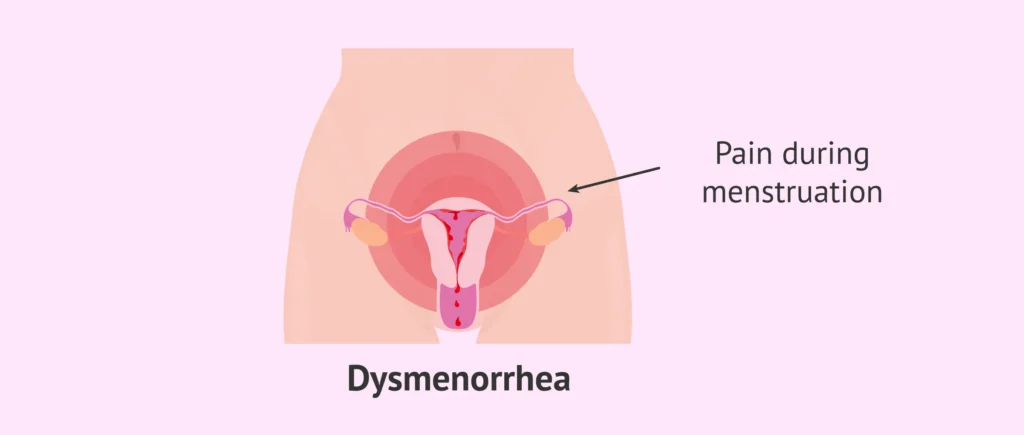Dysmenorrhea, commonly known as menstrual cramps, refers to the pain experienced before or during menstruation. It is a prevalent condition affecting a significant number of individuals during their reproductive years. Understanding its types, causes, symptoms, and management options is essential for effective relief and improved quality of life.

Types of Dysmenorrhea
Dysmenorrhea is categorized into two primary types:
- Primary Dysmenorrhea: This type involves recurrent menstrual pain without an underlying medical condition. The pain typically begins shortly before or at the onset of menstruation and lasts for 48 to 72 hours. It is most common among adolescents and young adults.
- Secondary Dysmenorrhea: This form results from identifiable medical conditions affecting the reproductive organs, such as endometriosis, uterine fibroids, or pelvic inflammatory disease. Pain associated with secondary dysmenorrhea often starts earlier in the menstrual cycle and may persist longer than primary dysmenorrhea.
Causes of Dysmenorrhea
- Primary Dysmenorrhea: The primary cause is the overproduction of prostaglandins, hormone-like substances that induce uterine contractions, leading to pain and reduced blood flow.
- Secondary Dysmenorrhea: Conditions contributing to this type include:
- Endometriosis: Presence of uterine tissue outside the uterus.
- Adenomyosis: Uterine lining grows into the uterine muscle.
- Uterine Fibroids: Noncancerous growths in the uterine wall.
- Pelvic Inflammatory Disease (PID): Infection of the female reproductive organs.
Symptoms of Dysmenorrhea
Common symptoms include:
- Throbbing or cramping pain in the lower abdomen.
- Pain radiating to the lower back and thighs.
- Nausea and vomiting.
- Diarrhea or loose stools.
- Headaches.
- Dizziness.
Diagnosis
Diagnosing dysmenorrhea involves:
- Medical History Review: Assessing menstrual cycle patterns and symptom onset.
- Physical and Pelvic Examination: Identifying any abnormalities.
- Imaging Tests: Utilizing ultrasound or MRI to detect underlying conditions.
- Laparoscopy: A surgical procedure allowing direct visualization of the pelvic cavity, used when other methods are inconclusive.
Management and Treatment
Effective management strategies include:
- Medications:
- Nonsteroidal Anti-Inflammatory Drugs (NSAIDs): Reduce prostaglandin production, alleviating pain.
- Hormonal Contraceptives: Regulate or suppress ovulation, reducing menstrual pain.
- Lifestyle Modifications:
- Regular Physical Activity: Engaging in exercise to reduce symptom severity.
- Dietary Adjustments: Incorporating foods rich in omega-3 fatty acids, vitamins D and E, and maintaining adequate calcium intake.
- Stress Management: Practicing relaxation techniques such as yoga and meditation.
- Alternative Therapies:
- Acupuncture: May provide relief for some individuals.
- Herbal Supplements: Ginger has shown potential in reducing menstrual pain.
- Surgical Interventions: Considered for severe cases unresponsive to other treatments, particularly when an underlying condition like endometriosis is present.
Preventive Measures
To minimize the occurrence and severity of dysmenorrhea:
- Maintain a balanced diet rich in essential nutrients.
- Engage in regular physical exercise.
- Avoid smoking and limit alcohol consumption.
- Manage stress effectively through mindfulness practices.